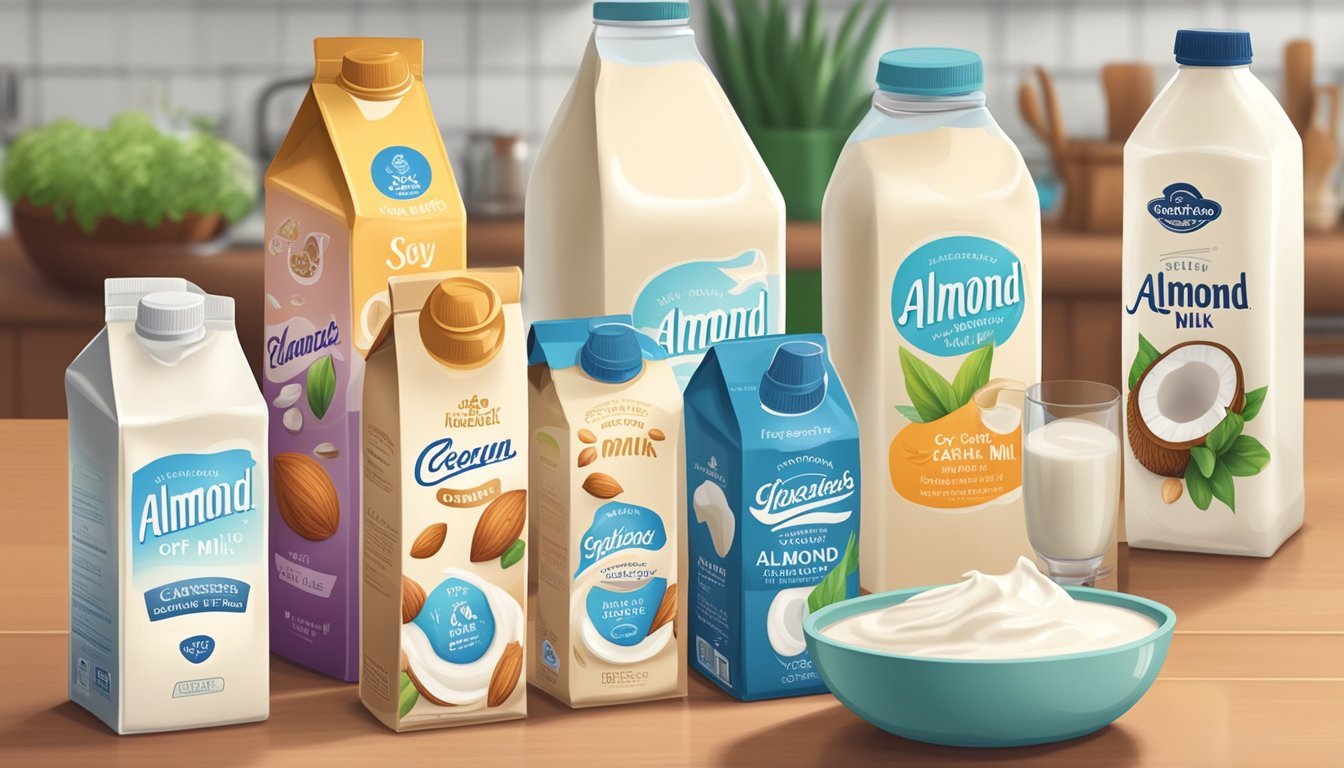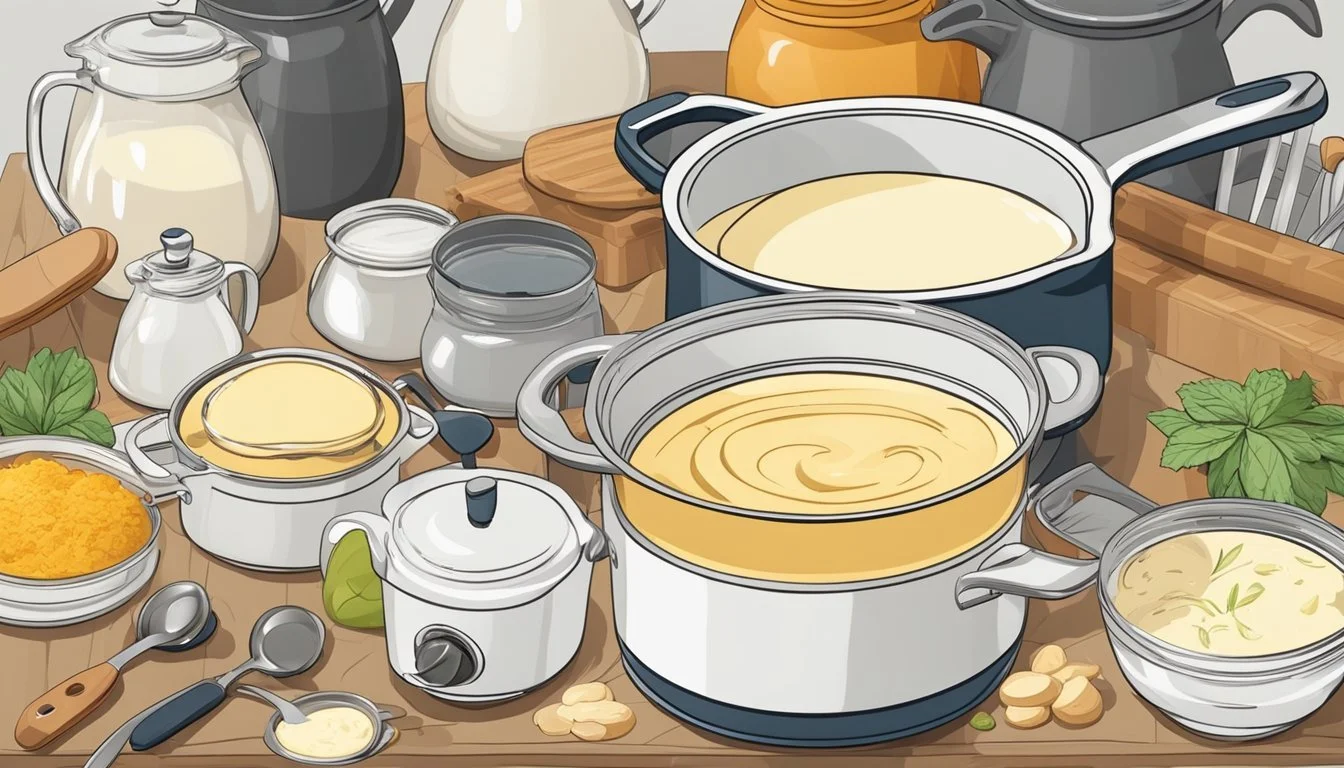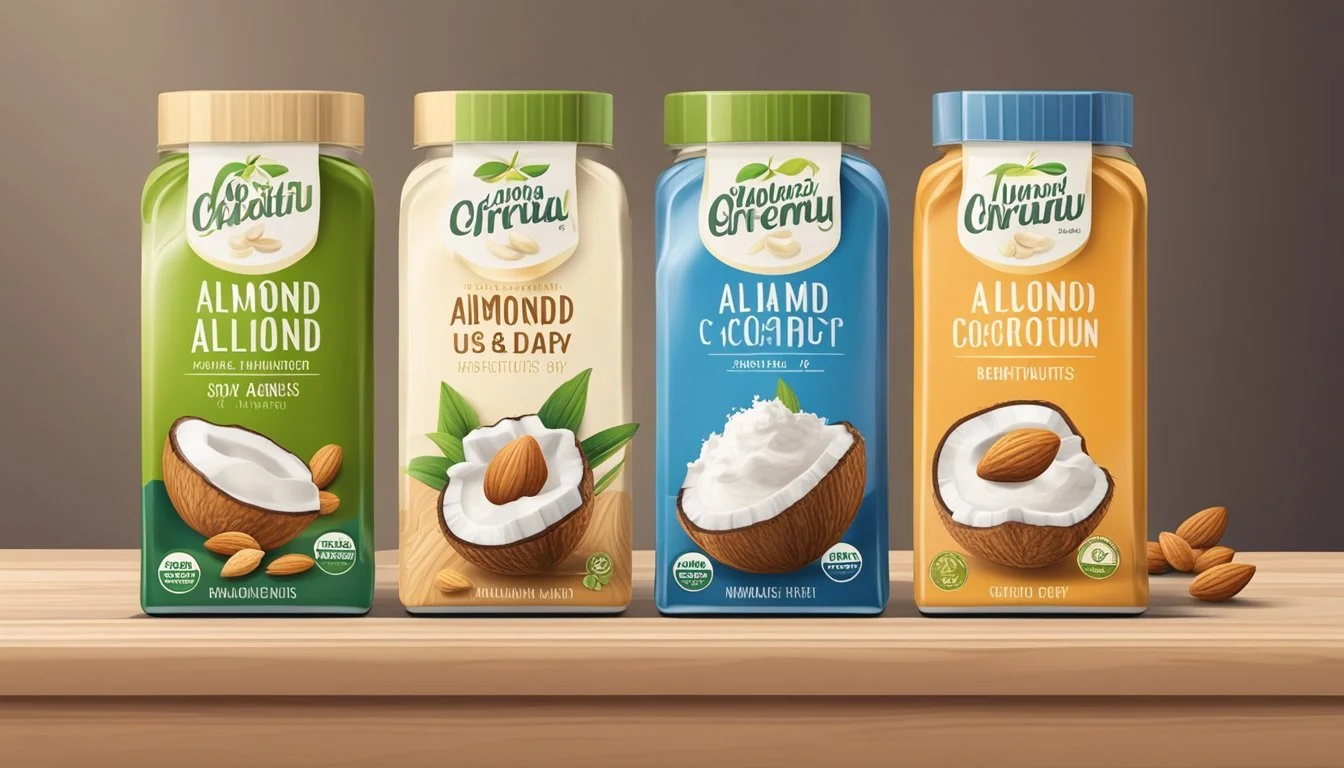Cream Substitutes
Best Alternatives for Cooking and Baking
Finding the right substitute for heavy cream can make or break a recipe. Whether you're in the middle of cooking and realize you're out, or you're seeking a healthier or dairy-free option, there are plenty of reliable alternatives. Half-and-half mixed with butter is a popular choice that closely mimics the fat content and consistency of heavy cream.
For those who prefer a non-dairy option, coconut cream provides a rich and creamy texture suitable for most applications, from soups to desserts. It's a versatile substitute that handles both high heat and delicate flavors well.
Another practical alternative involves blending olive oil with alt milk, creating a vegan-friendly solution that works well in various dishes. Each substitute offers unique benefits and can be tailored to suit different dietary needs and textures, ensuring your culinary creations remain delicious.
Understanding Cream and Its Role in Cooking
Cream serves as a vital ingredient in many recipes due to its rich texture and high-fat content. It enhances the flavor, mouthfeel, and appearance of dishes, making them more indulgent and satisfying.
Properties of Heavy Cream
Heavy cream is characterized by its high-fat content, which typically ranges from 36% to 40%. This high-fat percentage gives heavy cream its rich and thick consistency, making it ideal for whipping and creating stable foams.
Because of its density, heavy cream can also be heated without curdling, crucial for recipes involving simmering or boiling. Its luxurious texture is beneficial in both sweet and savory recipes, providing a smooth, creamy mouthfeel.
Importance of Fat Content in Creamy Dishes
The fat content in heavy cream is essential for imparting richness and depth to culinary creations. Fat acts as a carrier for flavors, enhancing and prolonging their impact on the palate. High-fat cream, therefore, boosts the overall flavor profile of a dish.
In sauces and soups, heavy cream's fat helps to emulsify and stabilize mixtures, ensuring a uniform and creamy consistency. Additionally, the fat in heavy cream contributes to the silky texture and luxurious mouthfeel that make dishes appealing and satisfying.
The balance of fat and liquid in cream also plays a critical role in baking, affecting the crumb and moisture content of baked goods.
Dairy-Based Cream Substitutes
Dairy-based cream substitutes can serve as practical alternatives for heavy cream in recipes. These substitutes leverage common ingredients like half-and-half, butter, milk, and evaporated milk to achieve similar creamy textures and flavors.
Half-and-Half and Its Uses
Half-and-half is a versatile substitute commonly used in cooking and baking. It is a blend of equal parts whole milk and light cream, resulting in a product ideal for recipes that require a lighter cream.
Its lower fat content makes it useful in soups, sauces, and desserts, where a rich texture is desired without the heaviness of heavy cream. This substitute cannot be whipped like heavy cream but provides similar creaminess in various dishes.
Butter and Milk Combination
A popular alternative involves mixing butter and milk. This combination mimics heavy cream's richness and texture, particularly effective in baking and cooking.
To create this substitute, blend 1/4 cup of melted butter with 3/4 cup of whole milk. The high-fat content from the butter replicates the creaminess of heavy cream, suitable for sauces and savory dishes. Like half-and-half, this mixture is not ideal for whipping but excels in providing a creamy consistency.
Evaporated Milk as Alternative
Evaporated milk offers another dairy-based option for replacing heavy cream, boasting a thick consistency due to its reduced water content.
When substituting, use it in a 1:1 ratio with heavy cream. Its slightly caramelized flavor enhances baked goods and desserts, making it preferable in sweet recipes. This substitute works well in soups and sauces too but lacks the ability to be whipped.
Light Cream Solutions
Light cream, also known as coffee cream, contains around 20% fat and serves as a good intermediary between whole milk and heavy cream.
It's perfect for enriching coffee, sauces, and soups. This can often replace heavy cream in recipes that do not require whipping. Light cream provides a lush mouthfeel with less fat than heavy cream, appealing to those seeking a lighter option.
By understanding the properties and applications of these dairy-based cream substitutes, one can effectively enhance recipes while accommodating dietary preferences or ingredient availability.
Non-Dairy Cream Substitutes
For those who are looking to switch to non-dairy cream substitutes due to dietary restrictions or personal preferences, several options can mimic the richness and texture of traditional dairy cream. These alternatives include coconut-based products, plant-based milk variations, silken tofu mixtures, and plant-derived oils.
Coconut Cream and Milk
Coconut cream is one of the most popular dairy-free cream substitutes. It is derived from the meat of mature coconuts and has a rich, creamy texture. Coconut milk can also be used, although it is lighter in consistency compared to coconut cream.
Both coconut cream and milk bring a slight coconut flavor, making them ideal for desserts, curries, and soups. Due to their high-fat content, they replicate the thickness and texture of heavy cream quite effectively. These products are also widely available and can be found in most grocery stores.
Soy and Almond Milk Variants
Soy milk is another versatile non-dairy cream substitute. It can be combined with a thickener like cornstarch or flour to achieve a creamier texture. This mixture is suitable for both sweet and savory dishes.
Almond milk, while lighter than soy milk, can also serve as a base for a cream substitute. Mixing almond milk with a small amount of oil can enhance its richness. These variants are ideal for those opting for lower-fat options while remaining vegan and dairy-free.
Silken Tofu Mixtures
Silken tofu can be blended into a smooth consistency and used as a non-dairy cream substitute. When combined with a plant-based milk like soy or almond milk, it creates a creamy mixture that can be used in both cooking and baking.
Silken tofu is especially good for those looking for a high-protein alternative. It absorbs the flavors of the ingredients it's mixed with, making it a versatile choice for various recipes. It is commonly used in sauces, dressings, and creamy desserts.
Oils and Plant-Based Fats
Certain plant-based oils, such as olive oil, can also serve as a cream substitute when emulsified with water or plant milk. Using a blend of oil and a plant-based milk can mimic the fat content of traditional cream.
Other plant-derived fats, like avocado or cashews, when blended with water, create a creamy consistency suitable for various culinary applications. These options are excellent for those seeking minimally processed, whole-food ingredients as their cream substitutes.
Specialty Cream Substitutes
Specialty cream substitutes provide versatile options for those seeking alternatives to traditional cream. These substitutes can replace heavy cream in various recipes while accommodating dietary preferences and requirements.
Cashew and Other Nut Creams
Cashew cream is a popular non-dairy option made by blending soaked cashews with water until smooth. This cream has a rich, creamy texture, making it suitable for sauces, soups, and desserts.
Almond and macadamia nut creams are other viable alternatives, offering slight variations in flavor and texture. Cashew cream, in particular, mimics the consistency of traditional cream and can be an excellent base for vegan and dairy-free recipes.
Nut creams can be purchased pre-made or prepared at home, providing flexibility for culinary enthusiasts. Nut allergies should be considered when using these substitutes.
Whipped Cream Alternatives
For those needing a whipped topping, various substitutes deliver on texture and flavor. Coconut cream, taken from the thick part of coconut milk, can be whipped to create a dairy-free alternative to traditional whipping cream.
Aquafaba, the liquid from canned chickpeas, is another innovative option. When whipped, it forms stiff peaks, similar to egg whites in meringues.
Soy-based whipping creams are also available, providing a plant-based solution that can hold its shape well. These whipped cream substitutes ensure that those with dietary restrictions can still enjoy fluffy, indulgent toppings.
Cultured Dairy Substitutions
Cultured dairy products such as yogurt and sour cream offer tangy, creamy alternatives to traditional cream. Greek yogurt can replace heavy cream in cooking and baking, adding a rich texture while bringing a slight tartness.
Sour cream is another cultured option that works well in both savory and sweet dishes. It not only provides a creamy texture but also imparts a unique flavor profile.
Cream cheese is another cultured dairy product that can substitute for cream in certain recipes, especially in cheesecakes or frostings, where a denser consistency is desirable.
These cultured dairy substitutions offer varied flavors and textures, enhancing a wide array of dishes.
Application of Cream Substitutes in Recipes
Cream substitutes can be effectively used in a variety of recipes, including baking, soups, casseroles, and dressings. Each substitute offers its unique characteristics, making it suitable for different culinary applications.
Baking and Desserts
In baking and desserts, substitutes like Greek yogurt, cream cheese, and mascarpone can provide the desired richness and texture. Greek yogurt works well in cakes and muffins, offering moisture and a slight tang. Cream cheese is an excellent choice for frostings and cheesecakes, lending creaminess and a rich flavor.
For those who prefer a non-dairy option, coconut cream is a suitable alternative. It can be whipped to create light, fluffy toppings for pastries and desserts. Silken tofu blended with a little sweetener also makes a versatile substitute for cream in custards and puddings.
Soups and Sauces
Heavy cream substitutes like whole milk combined with butter or evaporated milk work perfectly in soups and sauces. This mixture provides a similar consistency and richness without the same level of fat. Cashew cream, made from blended cashews and water, can be used to enrich soups like cream of mushroom or potato leek soup.
Soy milk mixed with olive oil is another effective substitute for creamy sauces. It performs well in dishes such as alfredo sauce or béchamel. These alternatives not only mimic the texture but also adapt well to various flavor profiles.
Casseroles and Curries
For casseroles and curries, cream substitutes like half-and-half or light cream suffice, providing the necessary creaminess without overwhelming the dish. In recipes such as chicken casserole or beef stroganoff, half-and-half keeps the texture rich and smooth.
Non-dairy versions, such as coconut milk or onion cream, are excellent in curries. Coconut milk pairs well with spices and adds a distinct flavor, making it ideal for Thai or Indian curries. Blended onion cream offers a milder taste while still contributing to the overall richness.
Salad Dressings and Toppings
In salad dressings and toppings, sour cream, Greek yogurt, and crème fraîche are fantastic substitutes. Sour cream is often used in creamy salad dressings for its tangy flavor and smooth texture. Greek yogurt can be mixed with herbs and spices to create healthy and delicious dressings.
For a more luxurious topping, crème fraîche can be used in place of heavy cream. It works well on fruit salads or as a garnish for savory dishes, providing a slight tang and rich consistency. These substitutes are versatile and help maintain the desired textures in dishes.
Health and Nutrition Considerations
When choosing a cream substitute, understanding the nutritional implications is crucial. Factors like calorie count, fat content, and protein levels play a significant role, especially for individuals with specific dietary needs.
Low-Calorie and Low-Fat Options
Choosing low-calorie and low-fat alternatives can be beneficial for those looking to reduce their overall fat intake. Half-and-half mixed with milk can work well, combining a lower fat content with a suitable consistency for many cooking needs. Another option is evaporated milk, which provides a similar mouthfeel without the higher calorie content of heavy cream.
Non-fat milk with a bit of cornstarch can also mimic the thickness needed, offering a lighter option. These substitutions ensure that dishes remain flavorful while reducing unhealthy fat consumption.
Dairy-Free and Vegan Alternatives
For those seeking dairy-free and vegan options, several choices can replace heavy cream. Full-fat coconut milk is a popular option, providing a rich texture and healthy fats, ideal for desserts and savory dishes alike. Soy milk with olive oil can replicate the fat content necessary in recipes, making it a versatile substitute.
Oat milk, especially the full-fat varieties, adds a creamy texture and works well in many culinary applications. These alternatives cater to those avoiding dairy products due to allergies, lactose intolerance, or dietary preferences.
Protein and Nutrient Content
Examining the protein and nutrient content of cream substitutes is essential. Greek yogurt is an excellent option, high in protein and able to provide a similar texture and richness to heavy cream. Silken tofu blended with water or a mild-tasting oil also adds a good amount of protein and can mimic the creaminess required in recipes.
Nut-based milks, like almond or cashew milk, although lower in protein, can still offer beneficial nutrients and healthy fats. Using these options can help maintain nutritional balance while catering to specific dietary needs.
When selecting a cream substitute, it is possible to cater to various dietary preferences without sacrificing taste or nutritional benefits. By focusing on low-calorie, dairy-free, and protein-rich options, these alternatives can easily fit into a healthy diet.
Practical Tips for Using Cream Substitutes
Selecting the right cream substitute can be a crucial aspect of cooking, whether for achieving desired textures and flavors or for specific dietary needs. Different substitutes require unique handling for optimal results.
Achieving Desired Texture and Flavor
Using cream substitutes effectively hinges on understanding their texture and flavor. For example, coconut cream offers a rich, sweet flavor, perfect for desserts. Its smooth texture makes it suitable for whipping.
Unsalted butter can be melted and mixed with whole milk, providing a creamy consistency suitable for sauces.
Silken tofu, when blended with soy milk, offers a smooth and mild base ideal for both sweet and savory dishes. Always consider the specific flavors and textures these substitutes bring.
Considerations for Cooking and Mixing
When using cream substitutes, the way they react to heat and mixing is important. Butter, combined with milk, should be whisked thoroughly, ensuring it cools to room temperature for better incorporation into recipes.
Coconut cream can be whipped similarly to heavy cream, but its natural sweetness might alter the flavor profile of a dish. Adjust sugar levels accordingly.
Silken tofu must be blended well with soy milk to achieve the required consistency. This blending process acts as a thickening agent, making the mixture suitable for a variety of culinary applications.
Storage and Preparation Insights
Proper storage ensures the longevity and efficacy of cream substitutes. Unused portions of coconut cream and silken tofu blends should be kept in airtight containers in the refrigerator.
Butter and milk mixtures should also be refrigerated and used within a few days.
For convenience, keeping these substitutes on hand means being aware of their shelf life and preparation requirements.
Coconut cream and silken tofu are often available at most grocery stores, providing quick and easy options for those needing an alternative to heavy cream.
Using these substitutes effectively requires attention to storage and preparation details to maintain their desired qualities in your cooking.





